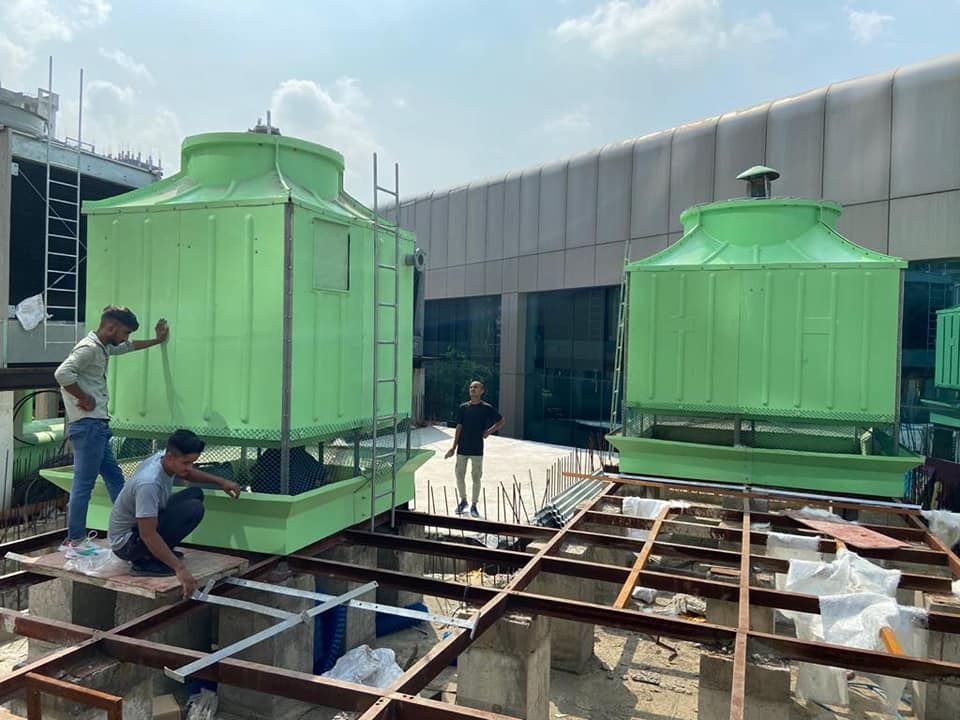comparison between Crossflow and Counterflow Cooling Towers, covering design, efficiency, maintenance, and applications:
1. Design & Air-Water Flow
| Feature | Crossflow Cooling Tower | Counterflow Cooling Tower |
| Airflow Direction | Horizontal (across falling water) | Vertical (upward, opposite to water) |
| Water Flow | Gravity-fed from distribution basins | Pressurized spray nozzles |
| Fill Media | Vertical sheets (water flows downward) | Stacked layers (air passes through gaps) |
Key Difference:
- Crossflow: Air and water move perpendicularly.
- Counterflow: Air and water move in opposite directions.
2. Efficiency & Performance
| Parameter | Crossflow | Counterflow |
| Heat Transfer | Good (longer air path) | Excellent (direct counterflow contact) |
| Approach* | Slightly higher (less efficient) | Lower (more efficient) |
| Drift Loss | Higher (unless drift eliminators used) | Lower |
| Recirculation | More likely (horizontal airflow) | Less likely (vertical airflow) |
*Approach = Difference between cooled water temp and wet-bulb temp. Lower = better.
3. Energy & Maintenance
| Factor | Crossflow | Counterflow |
| Pump Power | Lower (gravity-fed) | Higher (pressurized nozzles) |
| Fan Power | Lower (horizontal airflow = less resistance) | Higher (vertical airflow = more resistance) |
| Maintenance | Easier (open structure, accessible fill) | Harder (enclosed, nozzle clogging risk) |
| Clogging Risk | Low (no nozzles) | High (nozzles prone to scaling/debris) |
4. Space & Cost
| Aspect | Crossflow | Counterflow |
| Footprint | Larger (wider for horizontal airflow) | Compact (vertical design) |
| Installation Cost | Lower (simpler design) | Higher (complex nozzles, enclosed fill) |
| Operating Cost | Lower energy use | Higher energy use (pumps + fans) |
5. Applications
| Crossflow | Counterflow |
| – HVAC systems (easy maintenance) | – Power plants (high efficiency) |
| – Industrial plants (dirty water) | – Data centres (compact space) |
| – Low pumping power needs | – Refineries (precise cooling) |
Which One to Choose?
- Pick Crossflow If:
- Water contains debris/scaling.
- Low energy consumption is critical.
- Pick Counterflow If:
- High efficiency is needed.
- Water quality is well-controlled.
- Efficiency: Counterflow > Crossflow.
- Maintenance: Crossflow > Counterflow.
- Space: Counterflow wins for compactness.
Cost: Crossflow has lower operating costs
